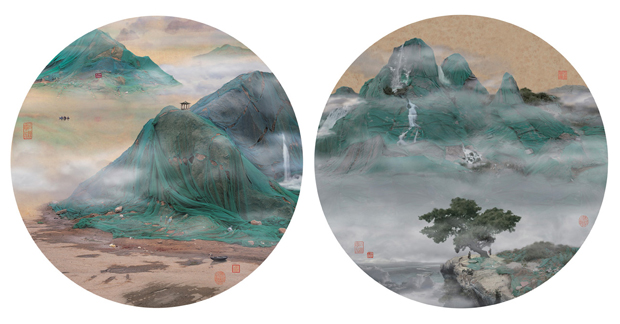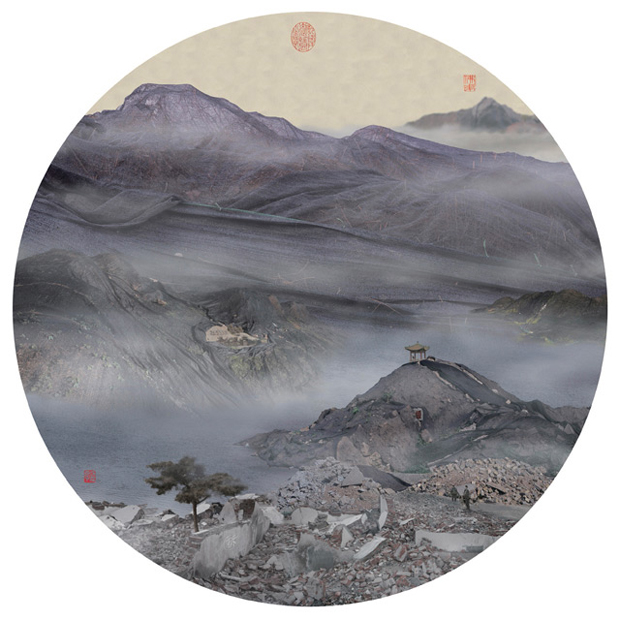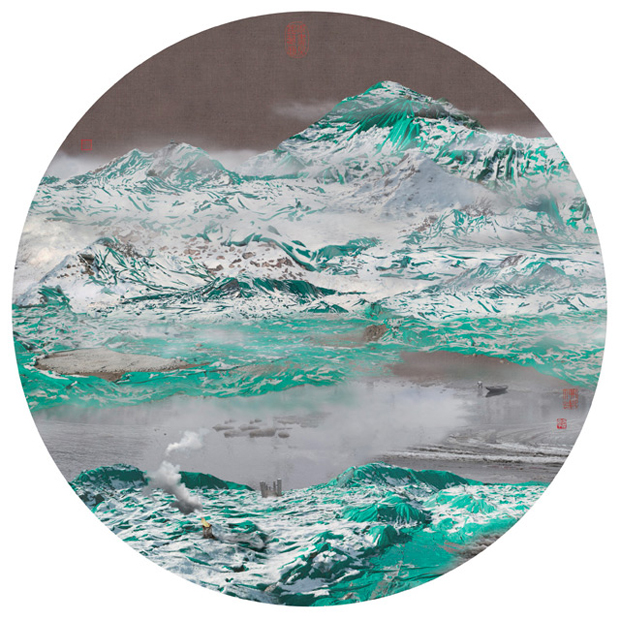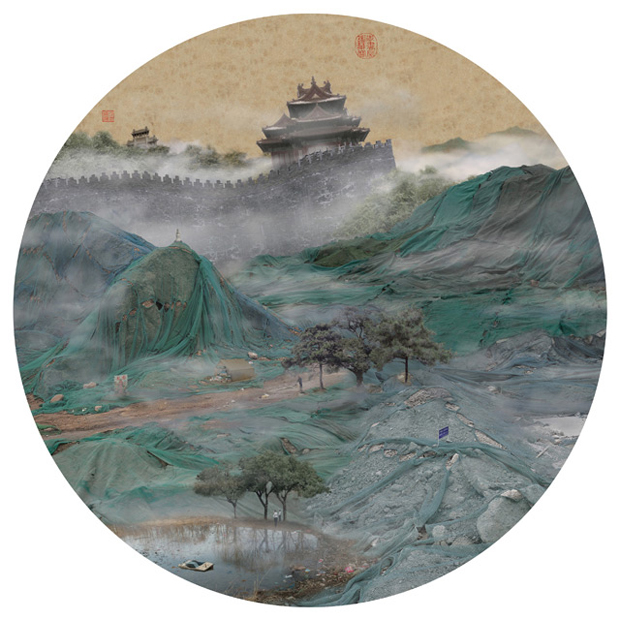
The New Landscapes of Yao Lu
The Prix Pictet-shortlisted photographer's work brings to mind the Japanese master Hokusai - but look again
At first glance these photographs by Chinese-born and Prix Pictet shortlisted photographer Yao Lu bring to mind the work of the Japanese artist Hokusai and the school of Ukiyo-e. But look again and you'll realise they're not what they seem.
Yao's works are entirely man made. The shapes resembling oriental landscape paintings of waterfalls, cliffs and mountains are in fact landfills and mounds of derelict rubble draped in the green mesh used to prevent dust blowing away from building sites or that cover skips while they’re in transit.

These contaminated landscapes now seem very far from the idyllic paintings and prints by the school of Ukiyo-e which were influenced by the city of Edo and its residents between 1603–1867. (Edo, now known as Tokyo, was a fashionable city even over 300 years ago and the artists who worked at the time were influenced by the festivities, firework displays and passions of the people who lived there.
Lu, who is an artist and teacher at the photography department of the Central Academy of Fine Arts in Beijing, digitally assembled the images using photographs he took himself. In New Landscapes he aims to show how the increasing urbanisation of his home country is having an effect on the natural landscape and health of the environment.

"Generally speaking, my works use the form of traditional Chinese painting to express the face of China," he says. "Today, China is developing dramatically and many things are under constant construction. Many things have disappeared and continue to disappear. The rubbish dumps covered with the ‘shield’, a green netting, are ubiquitous in China."
Lu goes on to say: "Photography can be understood in traditional ways: It can ‘record’ many histories long before our own time, and it can take people back to times and situations many years ago. But photography is also very contemporary. It can re-assemble and re-edit the things that we see in order to produce illusions that people see when they are in front of such photographic works. In these works, you see images that are both real and fictional."
